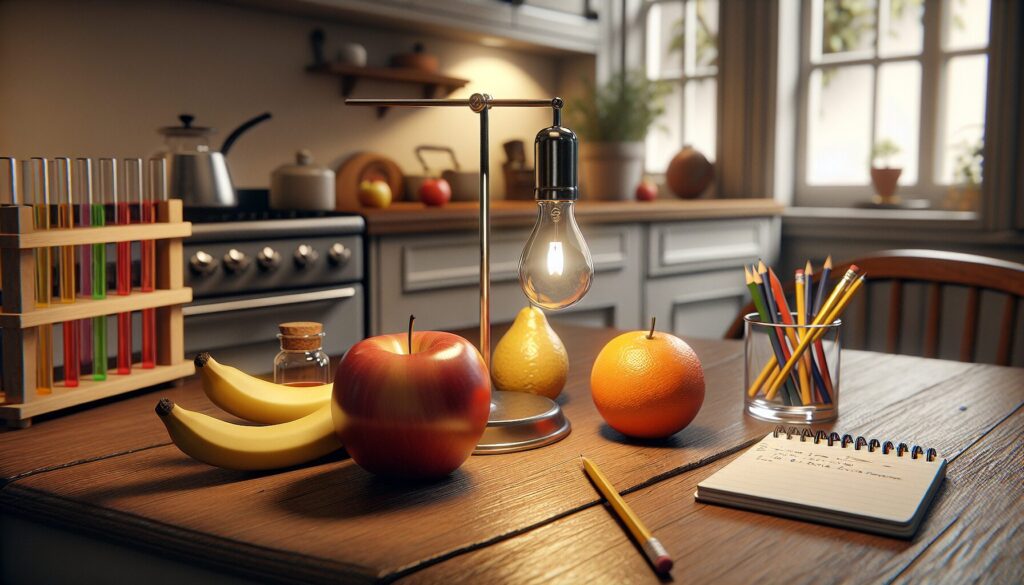Discovering the Wonders of Apples
Apples are more than just a tasty snack—they’re a gateway to exploring scientific thinking and inquiry. Today, we’ll delve into a fun and educational apples-focused experiment that’s perfect for encouraging children’s natural curiosity and love for learning. Imagine the joy of watching their eyes widen as they discover why apples float!
This simple exploration aligns perfectly with science basics, helping young explorers understand natural phenomena. Let’s grab a few apples and dive into a world of wonder together!
Float or Sink: A Juicy Experiment
Ready to get started? For our mini apple experiment, you’d need:
- A bowl or tub filled with water
- A few apples (any variety you have)
- Paper and pencil for observations
Steps:
- Fill the bowl or tub with water.
- Ask your child to guess whether the apples will float or sink.
- Gently place the apples in the water and observe together.
- Discuss why apples float—hint, it’s all about density!
This activity takes around 15 minutes. Feel free to tweak it by using other fruits or veggies for comparison. Enjoy the splashes and maybe a few giggles!
Unpacking the Benefits of Playful Science
Why is this activity so impactful? Science experiments like these not only engage children’s curiosity but also foster a profound love for learning. By questioning and seeking answers, children start building critical thinking skills early on.
Participating in such activities strengthens the emotional bond between you and your child, providing a supportive environment for growth. Plus, understanding basic scientific principles aids their comprehensive development, making new discoveries in daily life even more exciting!
Your Apple Adventures
Share your apple experiment adventure with us! Did your child guess right, or were they surprised by the outcome? We love hearing different takes, and your creativity might inspire other parents.
Feel free to mix things up—try varying the water temperature or use food coloring for a rainbow effect. Remember, learning is a joyful journey, and you’re crafting lasting memories of curiosity-driven exploration with your child.

